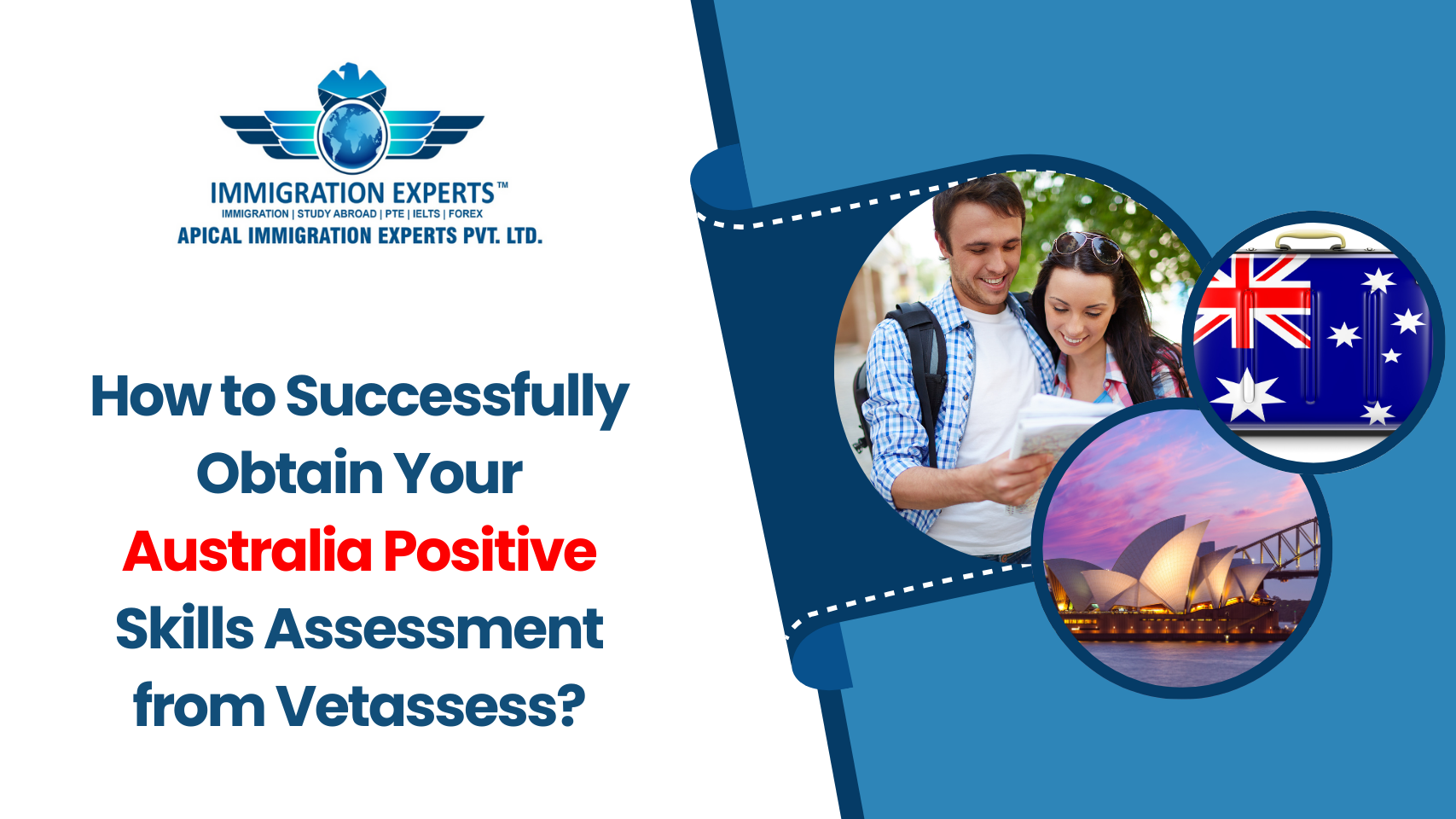Migrating to Australia as a skilled worker often begins with one important step — getting a positive skills assessment. For many occupations, this process is handled by VETASSESS, Australia’s leading skills assessment authority for general professional occupations. If your dream is to work, live, and build a future in Australia, understanding how to pass this stage is essential.
This guide explains the VETASSESS skills assessment process, common challenges, and the best strategies to ensure you receive a positive outcome.
What Is VETASSESS and Why Is It Important?
VETASSESS (Vocational Education and Training Assessment Services) is an Australian organisation authorised by the government to assess the skills, qualifications, and work experience of professionals from overseas.
Your VETASSESS skills assessment result directly affects your visa eligibility for programs like:
- Skilled Independent Visa (subclass 189)
- Skilled Nominated Visa (subclass 190)
- Skilled Work Regional (Provisional) Visa (subclass 491)
A positive assessment confirms that your qualifications and work experience match Australian standards for your nominated occupation.
Step 1: Confirm Your Occupation Is VETASSESS-Assessed
Before you begin, check if your nominated occupation is listed under VETASSESS’s General Occupations list. You can do this through the official VETASSESS website.
If your occupation falls under another authority (such as Engineers Australia or ACS), you’ll need to apply there instead. Choosing the wrong assessing body is a common mistake and can delay your visa application.
Tip: Use the Australian Government’s SkillSelect and VETASSESS occupation list to cross-check details before applying.
Step 2: Understand the Skill Level Requirements
VETASSESS classifies occupations into different groups. Each group has its own qualification and work experience requirements.
For example:
- Group A: Requires a degree closely related to the nominated occupation and at least one year of post-qualification work experience.
- Group B to F: Requirements vary depending on the complexity and level of the role.
Reading the VETASSESS fact sheet for your occupation will help you understand the exact criteria.
Step 3: Prepare Your Documents Carefully
Strong documentation is the foundation of a successful application. You’ll need to submit:
- Proof of Identity – Passport, national ID, or birth certificate.
- Educational Documents – Degree/diploma certificates and transcripts.
- Employment Evidence – Reference letters, contracts, payslips, tax records.
- Resume/CV – Highlighting duties, skills, and responsibilities.
Pro tip: VETASSESS is strict about employment references. Ensure they include:
- Exact job title
- Start and end dates
- Full-time or part-time status
- Detailed description of tasks
- Official company letterhead and signature
Step 4: Check for Closely Related Qualifications
Your qualification must be closely related to your nominated occupation. If your education is in a different field, VETASSESS may still accept your application if you have enough relevant work experience.
Example: A degree in marketing with 5+ years in market research could be acceptable for a “Market Research Analyst” occupation.
Step 5: Submit Your Application Online
Applications are lodged online through the VETASSESS portal. You’ll need to:
- Create an account.
- Fill in personal and employment details.
- Upload scanned documents in the required format.
- Pay the assessment fee.
VETASSESS usually takes 10–12 weeks to process a standard application. Priority processing is available for an extra fee.
Step 6: Be Ready for Additional Requests
Sometimes, VETASSESS may ask for extra documents or clarification. This doesn’t mean your application is weak — it’s part of the verification process.
Respond quickly and provide clear, well-organised evidence. Delays in replying can extend your processing time.
Step 7: Understand the Outcome
There are three possible results:
- Positive – Your skills and qualifications match Australian standards.
- Negative – Your application didn’t meet the requirements.
- Pending – VETASSESS is waiting for more information.
If your result is negative, you can request a review or appeal within the given timeframe. Strengthening your evidence often improves the outcome.
Common Mistakes to Avoid
Many applicants fail to get a positive outcome due to avoidable errors. Some include:
- Choosing the wrong occupation code
- Submitting incomplete references
- Using unofficial translations for documents
- Not matching qualifications to the nominated role
- Overlooking the minimum work experience requirement
Avoiding these mistakes will greatly increase your chances of success.
Benefits of a Positive VETASSESS Assessment
Getting a positive VETASSESS result means:
- You meet the skills requirement for your visa.
- You can claim work experience points for your Expression of Interest (EOI).
- You have a stronger case for state or territory nomination.
It’s a crucial step towards securing your Australian skilled migration visa.
Final Tips for Success
- Start gathering documents early to avoid last-minute stress.
- Read the VETASSESS guidelines for your occupation carefully.
- Use a registered migration agent if you’re unsure about the process.
- Keep copies of everything you submit.
- Stay updated on policy changes, as migration rules can change.
Conclusion:
Obtaining a positive skills assessment from VETASSESS is a vital part of your Australian skilled migration journey. By choosing the right occupation, meeting qualification requirements, and preparing strong documentation, you can significantly improve your chances of success.
Treat this step with the same importance as your visa application itself — because without it, your dream of living and working in Australia can’t move forward.
Need expert guidance to make your VETASSESS application stress-free and successful? Contact us today for a personalised consultation and let our migration experts help you secure your positive skills assessment on the first attempt.






